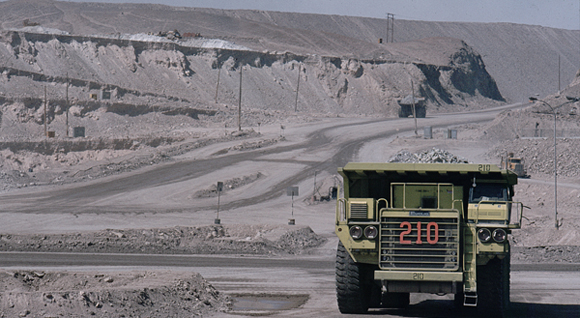- Washington “follows with interest” Morocco’s openness onto Africa (John Kerry)Posted 11 years ago
- The trial of South African Paralympic champion Oscar Pistorius opened in Pretoria on Monday.Posted 11 years ago
- USA welcomes efforts of King Mohammed VI in MaliPosted 11 years ago
- Egypt’s population reaches 94 millionPosted 11 years ago
- Mugabe celebrates his 90thPosted 11 years ago
- Moroccan Monarch to Build a Perinatal Clinic in BamakoPosted 11 years ago
- King Mohammed VI handed a donation of bovine semen for the benefit of Malian breeders.Posted 11 years ago
- Moroccan King’s strategic tour to Africa: Strengthening the will of pan African Solidarity and stimulating the south-south cooperation mechanisms over the continentPosted 12 years ago
- Senior al-Qaida leader killed in AlgeriaPosted 12 years ago
- Libya: The trial of former Prime Minister al-Baghdadi AliPosted 12 years ago
DRC: the bloody Minerals
 The Belgian Senate has revived the controversy over the exploitation and trafficking of natural resources in eastern DRC, involving Belgium openly in this case. The Belgian Senate is explicit on the subject and noted in his report that Brussels is hosting the most dominant companies in the mineral trade smuggled from Eastern DRC. The report provides new insights into the recurrent conflicts that undermine the eastern part of DRC.
The Belgian Senate has revived the controversy over the exploitation and trafficking of natural resources in eastern DRC, involving Belgium openly in this case. The Belgian Senate is explicit on the subject and noted in his report that Brussels is hosting the most dominant companies in the mineral trade smuggled from Eastern DRC. The report provides new insights into the recurrent conflicts that undermine the eastern part of DRC.
The illicit trade is not fed only by the Anglo-Saxon groups operating through fake companies based in neighbouring countries, particularly Rwanda, Uganda, with some branches in Kenya and Tanzania. Non-Governmental Organisations, such as Global Witness, had totally invested in getting Western governments, including that of Great Britain to impose sanctions to discourage some of their businesses. Most recently, the Obama administration has responded to the urgent appeal to international NGOs by the enactment of the “Dodd-Frank legislation” on regulating the trade in minerals from conflict zones of eastern DRC.
The largest volumes are exported to Belgium, which means in practice they are bought by traders in Belgium to be shipped to smelters established in Asia. “The chain of production, transportation and marketing is very diverse and it involves many actors and generally uses elements of the Armed Forces of the DRC, and ex-CNDP elements reversed in the national army.
Mineral incomes would fund armed groups, regular or not, thus perpetuating the situation of the virtual war in the region. Several reports have supported this view in the recent years, and that led to the designation of the event under the name of the Bloody minerals.
Then after, the “Dodd-Frank legislation” has been passed by the American Parliament, aiming to prohibit the importation of the bloody ore from the DRC, and the international community has stepped up to pressure for a certification of all minerals coming from the conflict zones of the Great Lakes.
By analogy with the Kimberley process planned for the diamond sector, it would grant licenses to “Clean ores, and exclude the contaminated ore from the approved world market places. Quite naturally, the idea of implementing worldwide the traceability of the minerals in the Great Lakes was born. This idea of traceability is taking shape. The United States passed a law that requires companies whose products contain cassiterite (tin ore), Colton, wolfram and the gold to inform the relevant department, namely the Securities and Exchange Commission (SEC) that they have provided these minerals from the DRC or a neighbouring country.
Following the U.S. law, the members of the International Conference on the Great Lakes Region (ICGLR) have proposed a summit meeting in November in Kinshasa, aiming to the eradication of the illegal exploitation of the natural resources in the Great Lakes. This is the application of Article 9 of the Pact on Security, Stability and Development in the Great Lakes region, which recommends the establishment of a regional mechanism for certification of the operation, the evaluation and control of natural resources.
However, some gray areas persist regarding the advantage that the DRC could actually pull from this mechanism because of the removal of the barriers, and some analysts are doubtful about Kinshasa to support, because being the main if not the only producer of all the so called bloody minerals.
